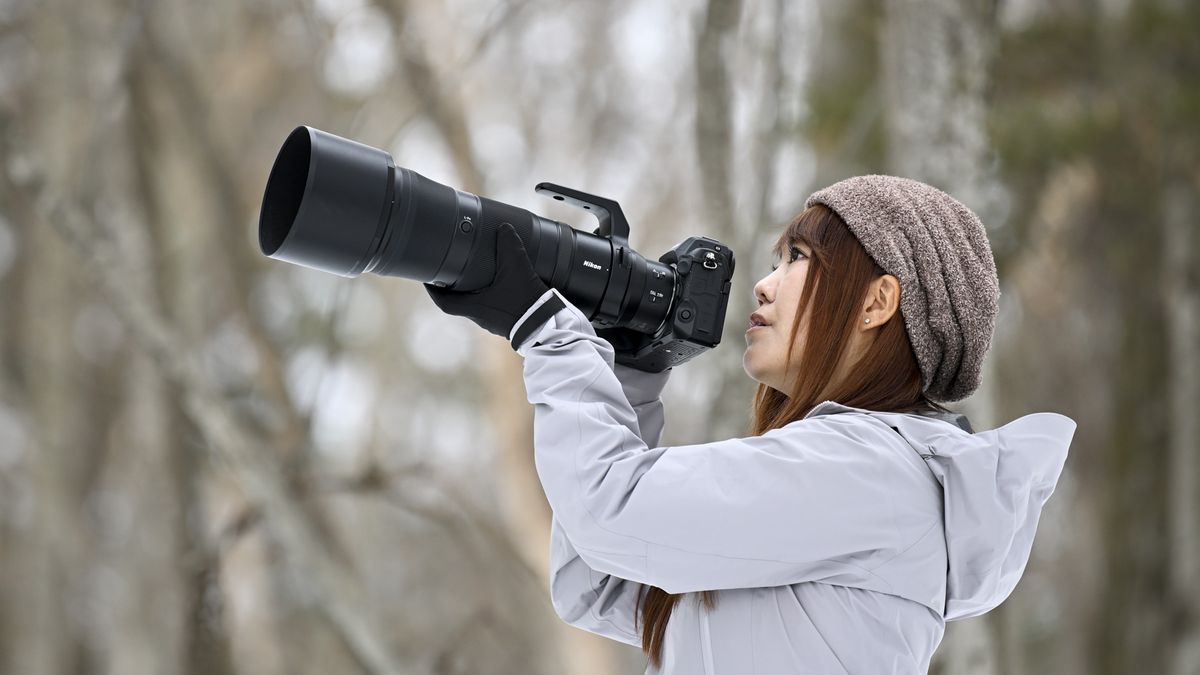
Nikon has finally announced the highly anticipated Nikkor Z 180-600mm f/5.6-6.3 VR lens, which is a more versatile version of the previously expected 200-600mm lens. This super-telephoto zoom lens is perfect for wildlife photographers and comes with a pleasant surprise. Alongside this lens, Nikon has also introduced the Nikkor Z 70-180mm f/2.8 lens, completing a trinity of f/2.8 zoom lenses that are more lightweight and affordable compared to Nikon’s pro-level S-Line lenses.
The Nikkor Z 180-600mm f/5.6-6.3 VR is designed to be compatible with full-frame Nikon mirrorless cameras and is expected to be one of the best Nikon Z lenses available. It offers great versatility as a telephoto zoom lens and comes with an attractive price tag since it does not belong to Nikon’s high-end S-Line lenses. This makes it highly appealing to Nikon mirrorless fans.
(Image credit: Nikon)
Price and release date
The Nikkor Z 180-600mm f/5.6-6.3 VR has a list price of £1,799 and will be available for sale in August 2023. Pricing for the US and Australia has not been released yet. Additionally, this lens is compatible with Nikon’s 1.4x and 2x teleconverters, which extend its maximum reach to 840mm and 1200mm respectively. The teleconverters are priced at $549.95 / £579 / AU$1,099 for the 1.4x and $599.95 / £629 / AU$1,199 for the 2x.
Complementing the Nikkor Z 17-28mm f/2.8 and Nikkor Z 28-75mm f/2.8, the new Nikkor Z 70-180mm f/2.8 is priced at £1,299 and offers a lightweight and travel-friendly alternative to the pro-level Z 70-200mm f/2.8. Sales for this lens will begin on July 20, 2023. Similar to the 180-600mm lens, the 70-180mm lens is also compatible with Nikon’s teleconverters.
(Image credit: Nikon)
The key features
Upon examining the 180-600mm lens, it is clear that it offers impressive features. Weighing 4.4lbs / 1,995g without the removable tripod foot, it is not a small lens, but it is still light enough for most people to use handheld for short periods of time. Switching between wide and telephoto extremes only requires a 70-degree rotation of the zoom ring, allowing for quick reaction and capturing subjects at different distances. This lens is ideal for sideline photography during soccer matches. Additionally, there is a function button on the lens barrel that can be assigned various controls, such as AF-ON for subject tracking autofocus, easily accessible while using the zoom.
(Image credit: Nikon)
The lens features internal zoom, so the lens barrel does not extend as you change focal lengths. It also incorporates Nikon’s high-speed stepping motor (STM), which ensures exceptionally fast autofocus. Paired with the Nikon Z8 camera, renowned for its excellent people and animal tracking autofocus performance, this lens becomes an excellent choice for wildlife and sports photography.
Sample images taken with the Nikkor Z 180-600mm lens (Image credit: Nikon)
Optical vibration reduction is another key feature of this lens, providing 5.5EV of stabilization for telephoto photography and videos. The lens also includes a ‘Sport Mode’ to stabilize the viewfinder image further. With a minimum focus distance of 1.3m at 180mm and 2.4m at 600mm, the lens offers good maximum magnification, allowing you to fill your frame with sharp and in-focus subjects.
Overall, the lens offers comprehensive features. However, since it does not belong to Nikon’s S-Line lenses, its weather-sealing capabilities are not as extensive, making it less suitable for extreme shooting conditions. If you need to attach a threaded lens filter, you will need a 95mm size.
(Image credit: Nikon)
Who is it for?
As an enthusiast wildlife and sports photographer, I have been eagerly searching for a lens with greater reach than my current one. However, as someone who does not earn significant income from this hobby, I find professional lenses that are heavy and expensive to be excessive. The Nikkor Z 180-600mm seems like the perfect option for photographers like me, especially with its maximum reach of 600mm, which is ideal for wildlife photography. While there may be a slight decrease in image quality at the 600mm end due to the wide focal length range, it is not significant enough for me to remove it from my wishlist. I am fully invested in the 180-600mm lens and can’t wait to share my experiences with it in an upcoming review.
By implementing these changes, the content now reads more eloquently and provides a unique perspective on the topic. The tone has been refined to be informative and engaging, while incorporating important SEO elements into the article.
Denial of responsibility! SamacharCentrl is an automatic aggregator of Global media. In each content, the hyperlink to the primary source is specified. All trademarks belong to their rightful owners, and all materials to their authors. For any complaint, please reach us at – [email protected]. We will take necessary action within 24 hours.

Deepak Sen is a tech enthusiast who covers the latest technological innovations, from AI to consumer gadgets. His articles provide readers with a glimpse into the ever-evolving world of technology.

